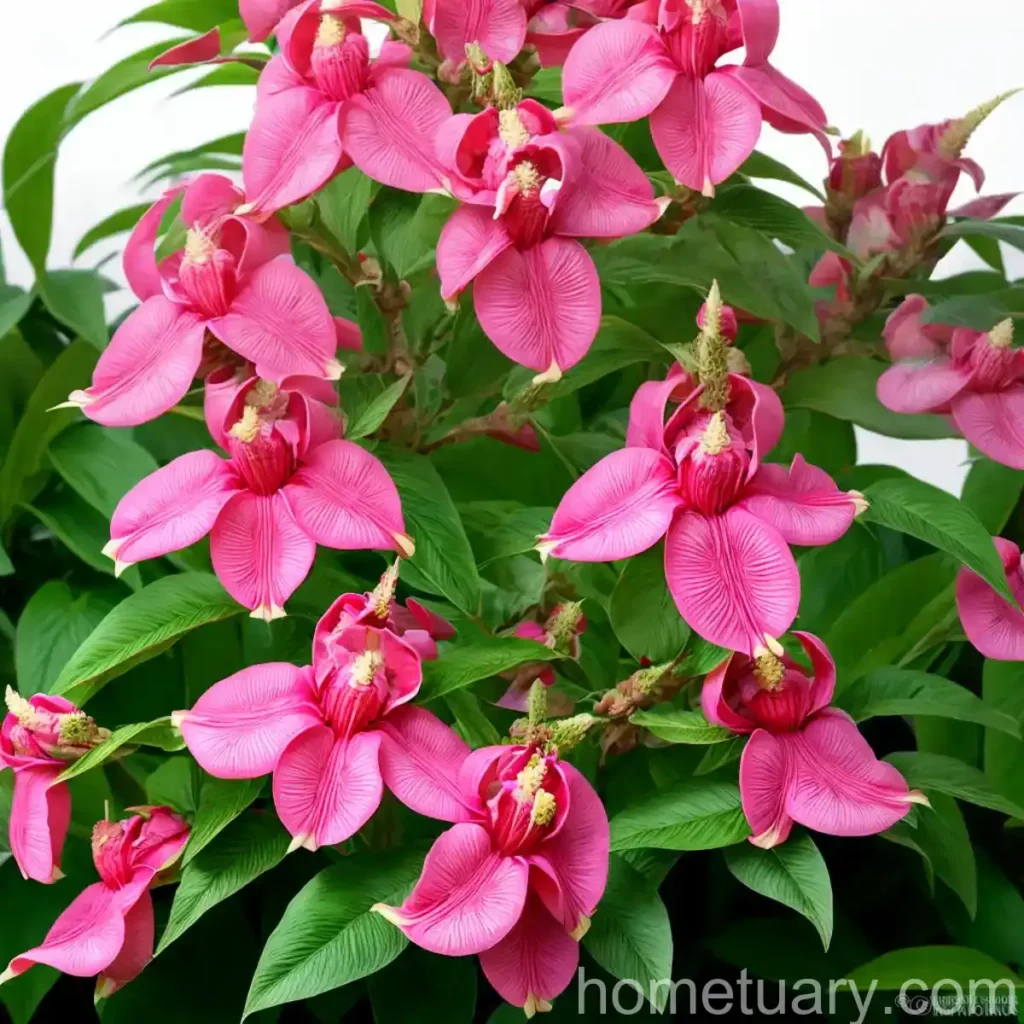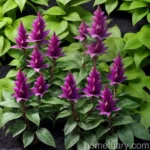Pink Turtlehead (Chelone Lyonii ‘Hot Lips’): A Complete Guide
Introduction
Plants play an essential role in the ecosystem and add beauty to the environment. Among the vast variety of plant species, the pink turtlehead (Chelone lyonii ‘Hot Lips’) stands out for its striking appearance and unique qualities. In this comprehensive guide, we will explore the various aspects of this beautiful perennial plant, from its basic characteristics to its cultivation, landscape uses, and ecological significance.
What is Pink Turtlehead (Chelone lyonii ‘Hot Lips’)?
The pink turtlehead, scientifically known as Chelone lyonii ‘Hot Lips’, is a perennial plant characterized by its vibrant pink flowers and turtlehead-shaped blooms. This plant belongs to the family Plantaginaceae and is native to the eastern regions of North America. It thrives in moist woodland areas and is typically found near streams, ponds, and wetlands.
The ‘Hot Lips’ variety of Chelone lyonii is particularly prized for its stunning pink flowers with unique markings resembling the open mouths of turtles, hence the common name “turtlehead”. This visually captivating plant is known for its wildlife attraction, making it a favorite among gardeners and nature enthusiasts alike.
Key Takeaways – Pink Turtlehead (Chelone lyonii ‘Hot Lips’)
Before delving into the specifics of the pink turtlehead plant, let’s first summarize the key takeaways to provide an overview of what will be covered in this guide:
- Plant Name: Pink Turtlehead (Chelone lyonii ‘Hot Lips’)
- Botanical Name: Chelone lyonii ‘Hot Lips’
- Common Names: Hot Lips pink turtlehead, Pink turtlehead flower, Hot Lips turtlehead
- Perennial Characteristics: Unique turtlehead-shaped pink flowers, wildlife attraction, moist soil preferences
- Cultural Uses: Landscaping, ecological restoration, medicinal applications
- Planting Requirements: Water, sunlight, soil, fertilizer, and pruning
- Propagation Methods: Seeds, division, and cuttings
- Growth Habits: Bushy, erect foliage with vibrant pink flowers
- Common Pests and Diseases: Deer resistance, disease resistance, shade tolerance
Now, let’s explore each of these aspects in detail to gain a comprehensive understanding of the pink turtlehead plant.
Culture
The cultural requirements of the pink turtlehead (Chelone lyonii ‘Hot Lips’) encompass various factors, including water, sunlight, fertilizer, soil, pruning, propagation, and container gardening. Understanding these aspects is crucial for the successful cultivation and maintenance of this visually captivating plant.
Water
Pink turtleheads are moisture-loving plants and thrive in consistently moist soil. Adequate water supply is essential, especially during periods of drought or hot weather. When establishing a new planting, regular watering is crucial to ensure that the root system develops properly.
In regions with adequate rainfall, natural precipitation can often meet the water needs of the pink turtlehead plant. However, during dry spells, supplemental watering may be necessary to maintain the desired moisture levels in the soil. Mulching around the base of the plant can also help retain soil moisture and reduce the frequency of watering.
Sunlight
While pink turtleheads favor moist soils, they also require adequate sunlight to thrive. These plants are best suited for partial shade to full sun conditions, although they can tolerate some shade. When selecting a planting site, it is important to consider the sunlight requirements and ensure that the location receives sufficient light for the plant to flourish.
In areas with intense summer heat, providing partial shade during the hottest part of the day can benefit the plant and prevent excessive stress. Additionally, planting pink turtleheads in locations with dappled sunlight or filtered light can help maintain soil moisture levels and promote healthy growth.
Fertilizer
Pink turtlehead plants generally do not have high fertilizer requirements, especially if they are grown in nutrient-rich soils. However, applying a balanced, slow-release fertilizer in the spring can promote healthy growth and vibrant blooms. A general-purpose fertilizer with balanced NPK (nitrogen, phosphorus, and potassium) ratios is suitable for pink turtleheads.
It is important to follow the manufacturer’s guidelines for application rates and timing when fertilizing the pink turtlehead plant. Overfeeding with fertilizer can lead to excessive foliage growth at the expense of flowering, so a cautious approach is advisable to maintain a natural and balanced growth habit.
Soil
The soil preferences of the pink turtlehead plant are closely tied to its natural habitat, where it is often found in moist, well-drained soils. When cultivating pink turtleheads, it is essential to provide soil that retains moisture without becoming waterlogged. Rich, loamy soils with good organic matter content are ideal for these plants.
Amending the soil with organic matter such as compost or well-rotted manure can improve its moisture retention and fertility. Additionally, ensuring proper drainage to prevent waterlogging is crucial, as excessive moisture can lead to root rot and other issues. A slightly acidic to neutral soil pH range of 6.0 to 7.0 is generally suitable for pink turtleheads.
Pruning
Pruning is an essential aspect of pink turtlehead plant maintenance, helping to promote healthy growth, remove spent blooms, and shape the plant as desired. Deadheading, or the removal of faded flowers, can encourage the plant to produce new blooms and prolong the flowering period. This practice also prevents the plant from expending energy on seed production.
In late fall or early spring, depending on the climate and growing season, pruning the pink turtlehead plant can help remove dead or damaged foliage and rejuvenate the plant for the upcoming growing season. The removal of old stems and foliage can also improve air circulation and reduce the risk of disease.
Propagation
Pink turtlehead plants can be propagated through various methods, including seeds, division, and cuttings. Each propagation method offers unique advantages and can be employed based on the specific requirements and preferences of the gardener.
Propagation by Seeds: Collecting and sowing seeds from mature pink turtlehead plants is a straightforward method of propagation. Seeds can be sown in containers or directly in the garden soil, with proper care and maintenance to support germination and early growth.
Propagation by Division: Dividing established pink turtlehead clumps is an effective way to propagate the plant and create new specimens. This method is typically carried out in early spring or fall, when the plant is dormant. Careful division of the root system and shoots can yield multiple new plants for transplantation.
Propagation by Cuttings: Stem cuttings can also be used to propagate pink turtlehead plants, although this method requires careful attention to humidity, temperature, and rooting hormone application. Softwood or semi-hardwood cuttings can be taken and rooted in a suitable growing medium to produce new plants.
Container Popularity
The pink turtlehead plant’s unique characteristics and cultural adaptability make it a popular choice for container gardening. Its vibrant pink flowers, compact growth habit, and distinctive foliage add visual interest to container arrangements, making it a versatile and attractive option for patios, balconies, and outdoor living spaces.
When cultivating pink turtleheads in containers, it is important to select a well-draining potting mix and provide adequate moisture and sunlight. Regular monitoring of soil moisture levels and proper drainage are crucial for the successful growth of pink turtleheads in containers. Additionally, selecting a container of appropriate size to accommodate the plant’s root system and growth requirements is essential for long-term health and vigor.
Common Diseases
Pink turtlehead plants are generally resistant to many common plant diseases, owing to their natural adaptability and robust growth habits. However, certain environmental conditions or factors can predispose them to specific diseases, necessitating proper care and preventive measures.
Disease Diagnosis
The following are some common diseases that may affect pink turtlehead plants and their associated symptoms:
-
Powdery Mildew: A fungal infection characterized by a powdery white coating on the foliage, often observed during periods of high humidity and inadequate air circulation. Symptoms include distorted or stunted growth, yellowing of leaves, and overall decline in plant health.
-
Root Rot: Excessive soil moisture and poor drainage can lead to root rot, causing wilting, yellowing, and eventual death of the plant. Affected roots may appear dark, mushy, and unhealthy, and the plant may exhibit signs of water stress despite ample moisture in the soil.
-
Leaf Spot: Fungal or bacterial leaf spot diseases can manifest as dark, water-soaked lesions on the foliage, leading to premature leaf drop and reduced plant vigor. Proper sanitation and controlled watering practices can help prevent leaf spot diseases.
-
Botrytis Blight: Also known as gray mold, botrytis blight affects the flowers and foliage of pink turtlehead plants, causing a fuzzy gray mold to develop on the affected tissues. Infected blooms may wilt and appear water-soaked, and the disease can spread rapidly under cool, damp conditions.
Common Pests
Pink turtlehead plants are relatively resistant to many common garden pests, owing to their bitter-tasting foliage and robust growth. However, certain pests may occasionally pose a threat to these plants, and vigilance is crucial to prevent infestations and mitigate potential damage.
Botanist’s Tips
-
Companion Planting: Pink turtlehead plants can be effectively paired with other moisture-loving perennials and shade-tolerant species to create beautiful and ecologically beneficial garden designs. Consider incorporating native plants such as ferns, astilbes, and hostas to complement the vibrant blooms and foliage of the pink turtlehead.
-
Wildlife Habitat: Pink turtleheads are known for their wildlife attraction, particularly to pollinators such as bees and butterflies. By planting these perennials in gardens and naturalized areas, you can create valuable habitat and food sources for local pollinators, contributing to ecological conservation efforts.
-
Mulching Benefits: Applying an organic mulch, such as shredded bark or compost, around the base of pink turtlehead plants can offer multiple benefits, including moisture retention, weed suppression, and soil insulation. Additionally, as the mulch breaks down, it contributes organic matter to the soil, supporting overall soil health and fertility.
Fun Facts
- The common name “turtlehead” derived from the unique shape and appearance of the pink turtlehead flowers, which resemble the heads of turtles.
- Pink turtlehead plants are considered deer-resistant, making them an excellent choice for landscapes where deer browsing is a concern.
- The foliage of pink turtlehead plants is also attractive, with glossy, deep green leaves that provide ornamental value even when the plant is not in bloom.
Links to External Resources
To further expand your knowledge and appreciation of the pink turtlehead (Chelone lyonii ‘Hot Lips’) plant, I recommend exploring the following resources:
- The American Horticultural Society: Plant Propagation
- University of Maryland Extension: Common Diseases of Ornamental Plants
- The Pollinator Partnership: Gardening for Pollinators
- The Royal Horticultural Society: Gardening Advice
By delving into these resources, you can gain valuable insights into plant propagation techniques, disease management, pollinator-friendly gardening practices, and expert gardening advice from renowned organizations and institutions.
In conclusion, the pink turtlehead plant, Chelone lyonii ‘Hot Lips’, offers a myriad of botanical, horticultural, and ecological benefits. From its unique visual appeal and wildlife attraction to its adaptability in various growing conditions, this perennial plant is an invaluable addition to garden landscapes, naturalized areas, and ecological restoration projects. By understanding and implementing the cultural requirements, disease management strategies, and botanist’s tips outlined in this guide, you can successfully cultivate and appreciate the beauty of the pink turtlehead in your own garden or landscape.
Remember, the pink turtlehead’s striking pink flowers and distinctive foliage make it a treasure of the perennial garden, enticing pollinators and captivating the human eye with its unique elegance.
Happy gardening and may your landscapes bloom with the vibrant allure of pink turtlehead (Chelone lyonii ‘Hot Lips’)!















